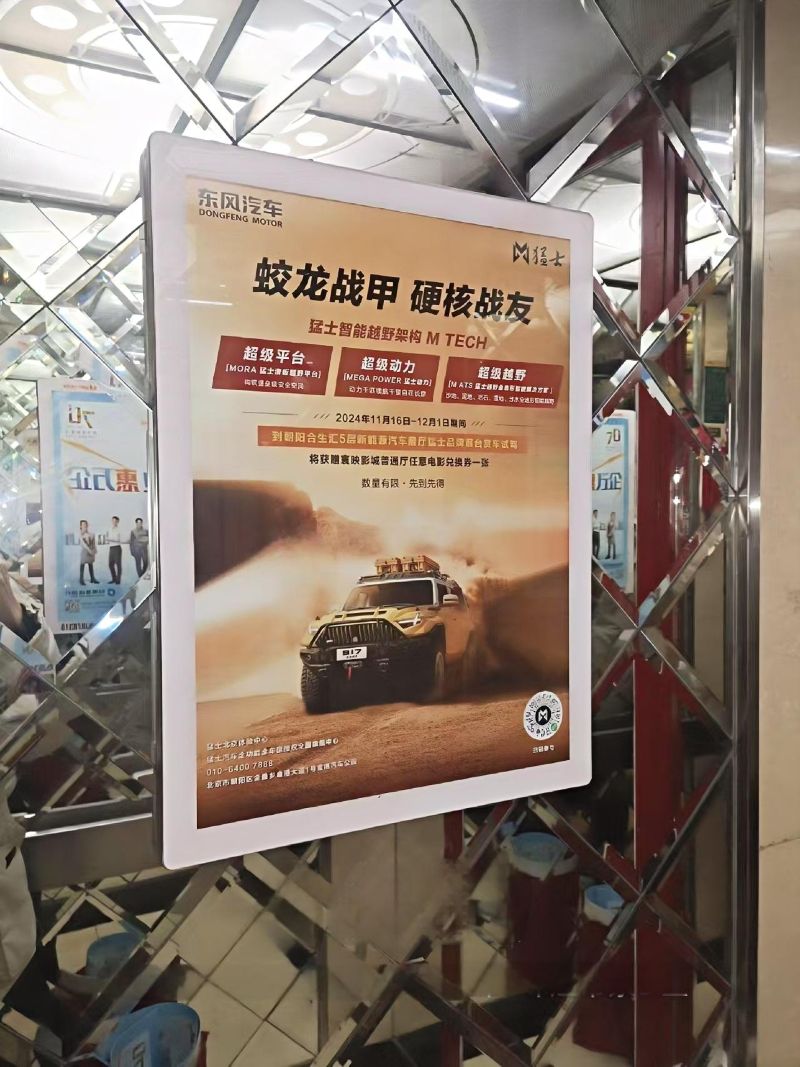How Effective Is Elevator Advertising?
2025-07-22Tianci MediaViews:157
Highlights
Elevator advertising is more than a media placement—it’s an immersive, high-frequency brand experience. By combining strategic location selection, creative design, digital interactivity, and continuous optimization, brands can turn fleeting 30-second exposures into lasting brand recall and user conversions.
In an era of increasingly diverse brand promotion strategies, elevator advertising has emerged as a key offline medium for advertisers due to its characteristics of high-frequency reach, targeted coverage, and mandatory exposure. But how effective is it truly? This article analyzes its value from five dimensions: audience dwell time, brand recall, interaction conversion, cost-effectiveness, and strategic execution, helping you scientifically evaluate the real impact of elevator advertising.

I. A Golden Window for High-Frequency Exposure ⏳
Elevators are a daily necessity, with the average passenger spending 20–40 seconds per ride.
- Fixed Scenario, Frequent Touchpoints
Elevator advertising integrates into commuters’ routines and residential pathways, enabling repeated visibility throughout the day. - Enclosed Space, Focused Attention
Unlike roadside ads that users "pass by," elevator ads operate in a confined environment where attention spans are longer and message absorption is more efficient.
Smart cameras and footfall counters reveal that over 80% of passengers fully view the ad within 30 seconds, offering brands a stable exposure opportunity. 🚀
II. A Catalyst for Deep Brand Awareness 🎯
In advertising theory, frequency and memory retention are closely linked.
- Repetition Builds Recognition
Ads in residential elevators are repeatedly viewed by the same residents, reinforcing brand recall within a short period. - Visual Impact + Concise Messaging
Most elevator advertising uses bold visuals and minimal text, delivering core messages in 3 seconds. Brand logos and color schemes further enhance memorability. - Contextual Brand Integration
Creative campaigns can create "mini-drama" effects, evoking emotional resonance and improving brand affinity. 💡
Field data shows that a two-week elevator advertising campaign can boost brand awareness by 15–25% and brand favorability by over 10%.

III. From "Seeing" to "Engaging" 📱
Digital integration has transformed elevator advertising from one-way communication to interactive experiences.
- QR Codes & Short Links
Embedding QR codes in ads guides users to promotions, coupons, or mini-programs, driving online traffic. - AR & Voice Interaction
Advanced campaigns support AR experiences or voice recognition, allowing passengers to interact with content via smartphones. - Social Media Amplification
Users sharing elevator ads on WeChat Moments or Weibo generate additional social buzz.
IV. ROI: The Real-World Test 💰
Elevator advertising costs are relatively transparent:
- Daily Pricing
In Tier-1 cities, core area elevator frames cost ¥100–300/frame/day; in Tier-2/3 cities, ¥50–150/frame/day. - Monthly Packages
A 10-frame, one-month campaign (including production/installation) typically costs ¥30,000–80,000.
ROI can be evaluated using CPM (cost per thousand impressions) and CPA (cost per acquisition): - CPM Calculation
At 2,000 daily impressions/frame and a ¥200/day rate, CPM ≈ ¥100—highly cost-effective. - CPA Calculation
If ¥200/day generates 10 valid interactions, CPA ≈ ¥20. Combined with promotions and repeat purchases, ROI becomes significant.

V. Strategic Execution for Maximum Impact 🚀
- Targeted Placement
Prioritize elevators in high-traffic residential complexes, office buildings, and commercial hubs. - Creative Design
Use bold visuals, clear CTAs (calls to action), and context-aware storytelling to maximize engagement. - Data-Driven Optimization
Track scan rates, app downloads, and conversion metrics to refine creatives and placements. - Multi-Channel Synergy
Combine elevator advertising with social media campaigns or in-store promotions for a full-funnel effect.
Elevator advertising is more than a media placement—it’s an immersive, high-frequency brand experience. By combining strategic location selection, creative design, digital interactivity, and continuous optimization, brands can turn fleeting 30-second exposures into lasting brand recall and user conversions. As the saying goes: “To see is to remember; to interact is to convert.” With its proven ROI and scalability, elevator advertising remains a powerful tool for modern marketers.













